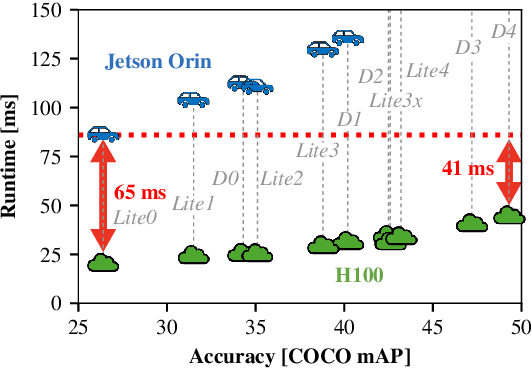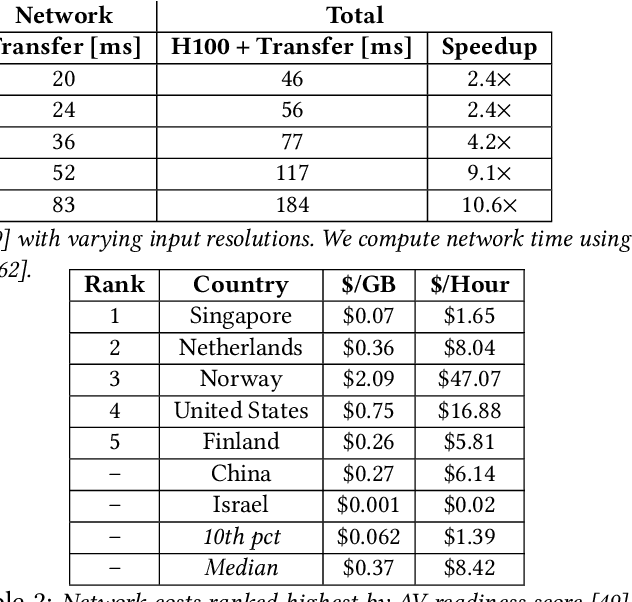Alexander Krentsel
Bandwidth Allocation for Cloud-Augmented Autonomous Driving
Mar 26, 2025Abstract:Autonomous vehicle (AV) control systems increasingly rely on ML models for tasks such as perception and planning. Current practice is to run these models on the car's local hardware due to real-time latency constraints and reliability concerns, which limits model size and thus accuracy. Prior work has observed that we could augment current systems by running larger models in the cloud, relying on faster cloud runtimes to offset the cellular network latency. However, prior work does not account for an important practical constraint: limited cellular bandwidth. We show that, for typical bandwidth levels, proposed techniques for cloud-augmented AV models take too long to transfer data, thus mostly falling back to the on-car models and resulting in no accuracy improvement. In this work, we show that realizing cloud-augmented AV models requires intelligent use of this scarce bandwidth, i.e. carefully allocating bandwidth across tasks and providing multiple data compression and model options. We formulate this as a resource allocation problem to maximize car utility, and present our system \sysname which achieves an increase in average model accuracy by up to 15 percentage points on driving scenarios from the Waymo Open Dataset.
Managing Bandwidth: The Key to Cloud-Assisted Autonomous Driving
Oct 21, 2024



Abstract:Prevailing wisdom asserts that one cannot rely on the cloud for critical real-time control systems like self-driving cars. We argue that we can, and must. Following the trends of increasing model sizes, improvements in hardware, and evolving mobile networks, we identify an opportunity to offload parts of time-sensitive and latency-critical compute to the cloud. Doing so requires carefully allocating bandwidth to meet strict latency SLOs, while maximizing benefit to the car.
 Add to Chrome
Add to Chrome Add to Firefox
Add to Firefox Add to Edge
Add to Edge